Checking, removing and refitting road wheels
The Video Course teaches you everything about modern cars.
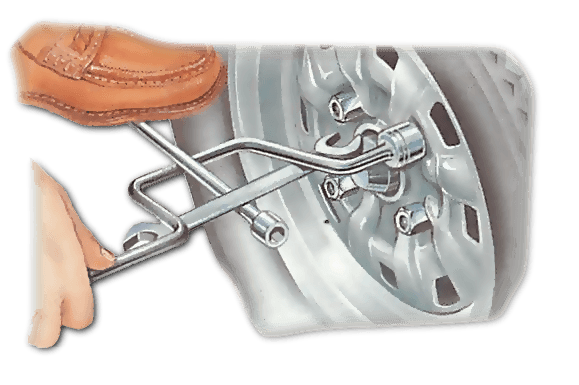
When you take the wheels off to inspect the tyre walls, clean the wheels thoroughly and look closely for cracks starting around the stud holes, and at the joints between the rim and centre.
Cracks may indicate structural weakness due to corrosion, or that the wheel nuts are either too loose or are over-tightened. Such damage means that the wheel should be replaced.
Damage to wheel rims is much more common, as it can happen while parking against a high kerb.
Look for deep scuff marks, buckling and denting on steel rims, and for chipping and splitting on aluminium or magnesium alloy wheels.
If the denting is not too severe, steel wheels can usually be straightened by a garage. But they may no longer make an airtight seal with a tubeless tyre. Fitting an inner tube may solve the problem.
However, a damaged rim may also make the wheel difficult to balance.
Very minor chips or scrapes on alloy wheels can be ignored, but cracks are serious - fit a new wheel.
Magnesium alloy wheels corrode badly if their protective lacquering is disturbed - or eroded by time and flying grit. Frequent inspections should be made for that sort of damage, and the wheels re-lacquered if necessary before corrosion can set in. There are proprietary lacquers specially for car wheels, and instructions for applying them are given on the container.
Steel wheels can rust, but they are made of metal thick enough to withstand all but the most vicious attacks, well beyond the useful life of the car.
However, rusty wheels are not an attractive sight, and can be prepared and painted like any other part of the car (See ).
Checking valves
A persistent, slow loss of pressure from a tyre can be due to a faulty valve . Whenever a tyre is taken off, new valves should be fitted. Leaving the old ones in is a false economy, as the rubber seating around the base of the 'snap-in' type of valve stem used with tubeless tyres eventually deteriorates.
The inner core of the valve also deteriorates with age - especially if the valve cap is missing, allowing `dust and grit to enter.
Look carefully at each valve for cracking or hardening of the rubber covering around the stem.
Unscrew the cap and check that no dirt is trapped underneath, then replace it tightly. Remember that it forms a second pressure seal, as well as a protective shield.
If you suspect a valve leak, wet your finger and wipe it over the valve to cover it with an unbroken bubble. An air leak will burst it.
Inner tubes, when fitted, have integral valve stems which cannot be replaced. Always have a new inner tube fitted when a worn or damaged tyre is replaced.
Switching wheels round
Because front tyres usually wear faster than rear tyres, wheels are sometimes rotated - switched from one position to another - in order to equalise the tread wear. The practice is not recommended.
Wear on the front wheels is often greatest on the outside shoulders, so the best way to equalise wear would be to have the tyre removed from the rim, reversed on the wheel and rebalanced. The cost of having this done could offset any saving in tyre wear.
Some manufacturers believe that changing the wheels round makes a car's steering and roadholding unpredictable until the tyres have established a new pattern of wear.
Rotating wheels means that all four tyres, plus the spare, are likely to wear out at the same time. Changing a pair of tyres on one axle at a time, bringing in the spare at each stage, spreads the cost of replacement.
Removing a road wheel
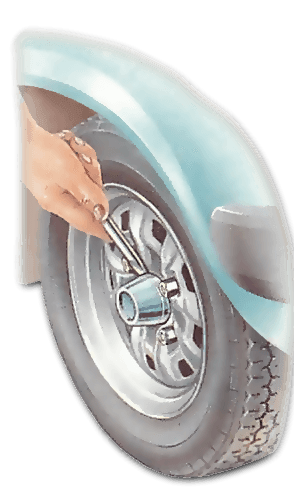
Before removing a road wheel, take off the hub cap and any decorative wheel trim. Some hub caps or trims are screwed on, but most are a push-fit and can be prised off with a large screwdriver.
The wheel nuts or bolts - there may be three, four or five - are loosened slightly before jacking up the car. Loosen them in the correct sequence of 'opposite pairs'.

Use a wheelbrace or a suitable socket spanner. If a nut is hard to shift, set the wheelbrace at an appropriate angle, then stamp down sharply on the handle.
Alternatively, increase the leverage on the handle by slipping a length of pipe over it.
With a crank-handled wheelbrace, two tyre levers can be used to apply more force . Some penetrating oil applied between nut and wheel may also help.
When all the wheel nuts have been loosened, apply the car handbrake and place a chock under the wheel that is diagonally opposite the one you are removing. Then jack up the car at the jacking point nearest to the wheel being removed.
Hydraulic trolley jacks are quick and easy to use - but expensive to buy or even hire. The standard tool-kit jack is generally adequate. It is usually of the scissors or pillar type, and the car handbook will show the jacking points.
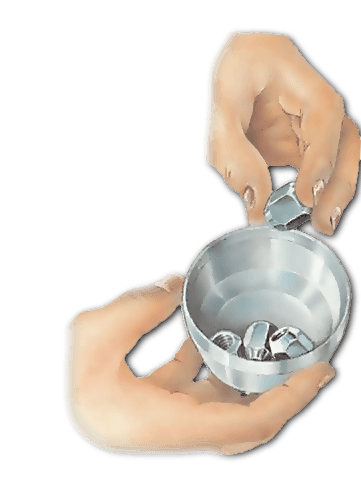
The nuts, already freed, are now easy to remove. Note that wheels that have been balanced on the car should be replaced in exactly the same position. Before taking them off, mark the wheel and studs.
Put the nuts in a safe place, so they will not be lost. A good spot is in the hub cap, already removed.
Refitting a road wheel
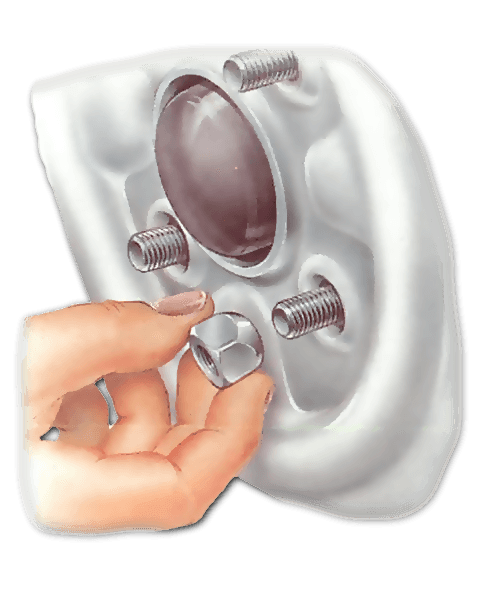
To refit the wheel, replace it on the studs then screw on all the wheel nuts hand-tight.
If it is a wheel that has been balanced on the car, be sure to replace it on the marks you made before removing it.
Note that where the stud holes in the wheel are countersunk, the conical faces of the nuts fit into them.
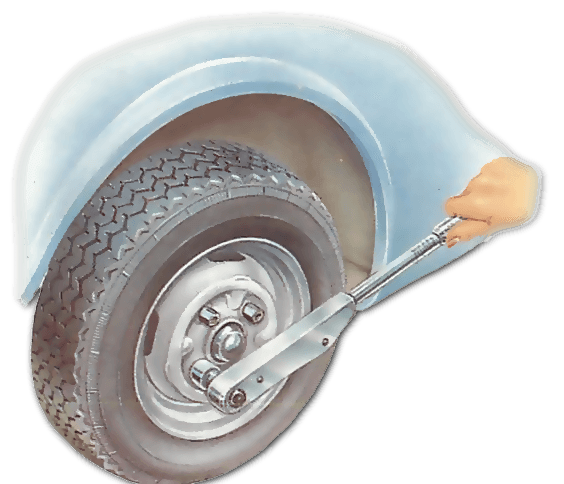
Tighten all the wheel nuts with the wheelbrace or a socket spanner until they are seated, then lower the car to the ground . Now tighten the nuts fully.
To avoid unequal stresses, turn them a little at a time, and in the correct sequence of opposite pairs. If you have a torque wrench , use it to tighten them to the exact loading recommended - consult a suitable manual or your nearest dealer if in doubt.
The Ultimate Car Mechanics video course
Learn everything about modern cars from our new video series.
Learn more >-
We build a Mazda MX5 Miata from scratch
We start by tearing down and then rebuilding the whole car.
-
Every part explained
There's ridiculous detail on every part. Clearly and easily explained.
-
All modeled in 3D
We've created the most detailed 3D model ever produced so we can show you everything working.






